I’ve just come back from Ostend, where I spent four perfect days. No, not sun, sea and sand — eight hours of intensive bridge, followed by non-stop hand analysis over supper. I was there for the European women’s pairs, partnering the wonderful Marusa Basa (soon to become Mrs David Gold). After qualifying for the A final, we finished a disappointing 16th. But I’m still on a high from the sheer adrenaline of it — especially as the European open teams championships were taking place at same time and venue (indeed they’re still going on), so we could check on England’s progress. This slam, played by Andrew Robson, caused a fair amount of discussion, with some commentators daring to suggest that Andrew had taken an inferior line!
England was playing Estonia, who also reached 6NT and got the same ♦2 lead. Olavi Oja (West) won with dummy’s ♦K, played a spade to the ♠K and a heart to the ♥Q . England’s Chris Jagger won and returned a heart. Oja put up the ♥K and cashed his winners outside clubs. (If clubs don’t break, this line works when North has ♥Jx, and sets up a squeeze when spades are 3–3 and either defender holds four clubs and the ♥J.) Unlucky — two down.
Robson also won in dummy — and played clubs from the top. Superficially, this looks odd: how can you test clubs before knocking out the ♥A? What if the defender with long clubs holds the ♥A? But Andrew had worked out the odds. Playing a heart to the ♥Q doesn’t help. If South wins and returns a heart, you have to choose what to play without knowing if clubs break. If the ♥Q wins, you’re in the same boat. When clubs didn’t break, Robson played the ♥Q, won by South, who returned a heart. He finessed — slam made. Come on Eng-er-land!
Got something to add? Join the discussion and comment below.
Get 10 issues for just $10
Subscribe to The Spectator Australia today for the next 10 magazine issues, plus full online access, for just $10.
You might disagree with half of it, but you’ll enjoy reading all of it. Try your first month for free, then just $2 a week for the remainder of your first year.

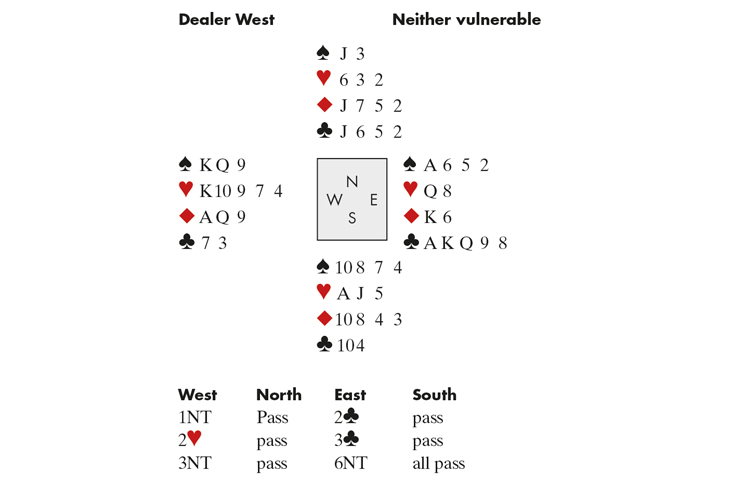
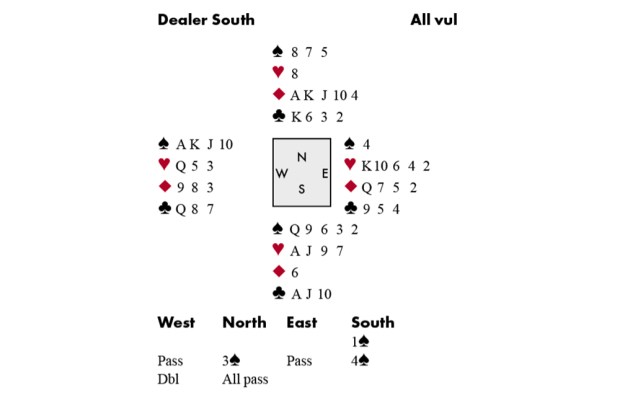
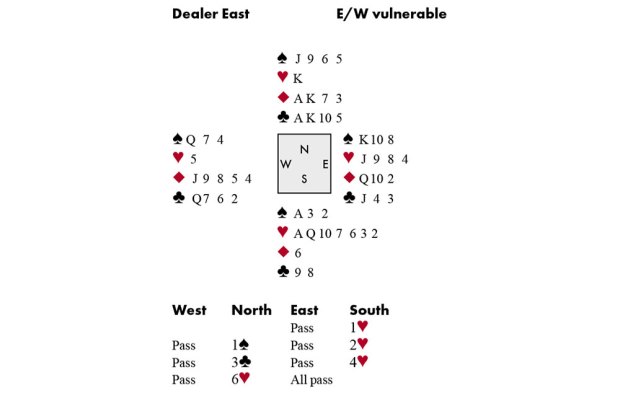
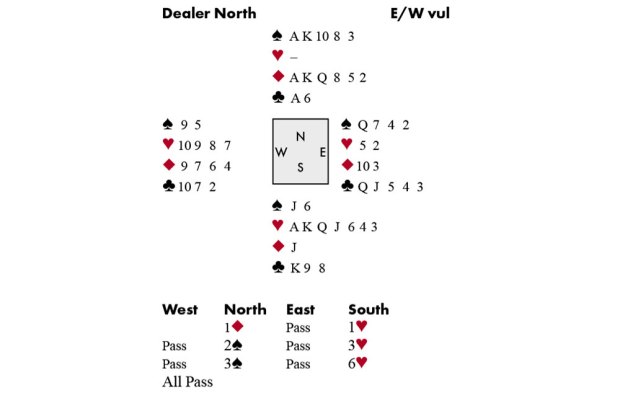
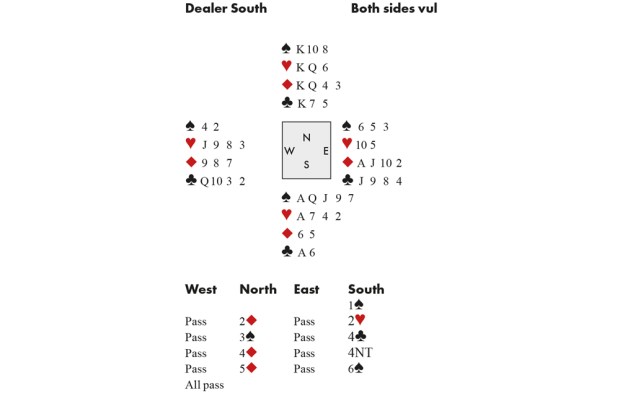
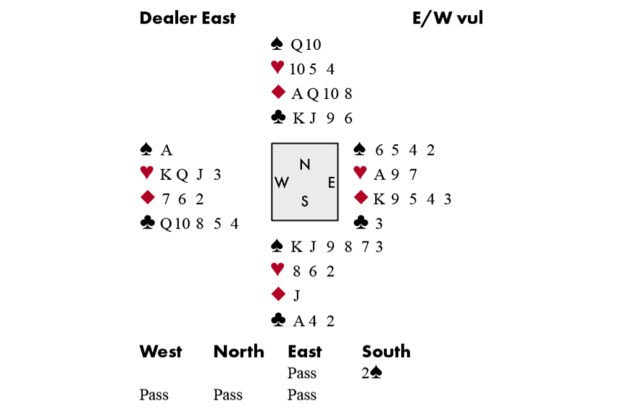
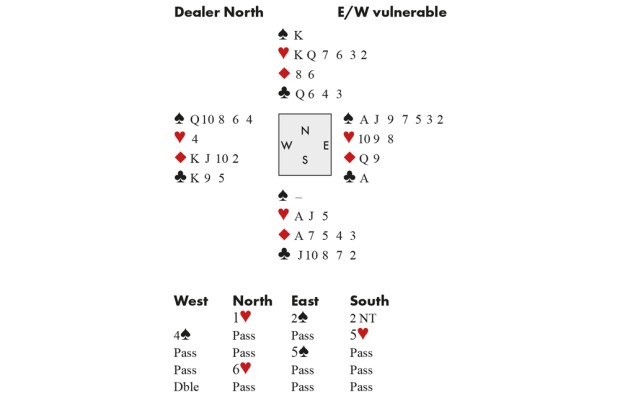






Comments
Don't miss out
Join the conversation with other Spectator Australia readers. Subscribe to leave a comment.
SUBSCRIBEAlready a subscriber? Log in